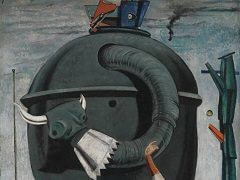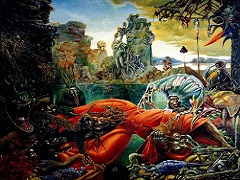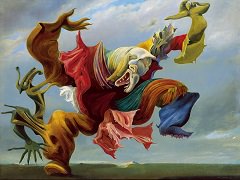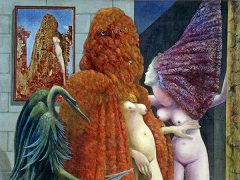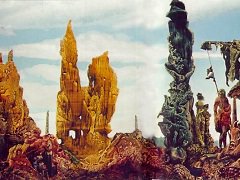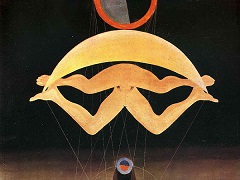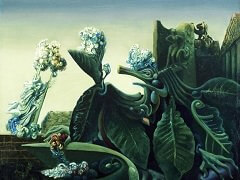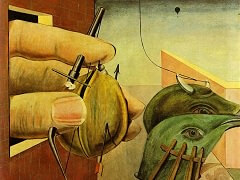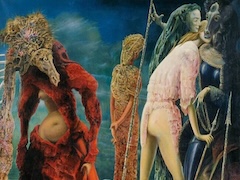Forest and Dove, 1927 - by Max Ernst
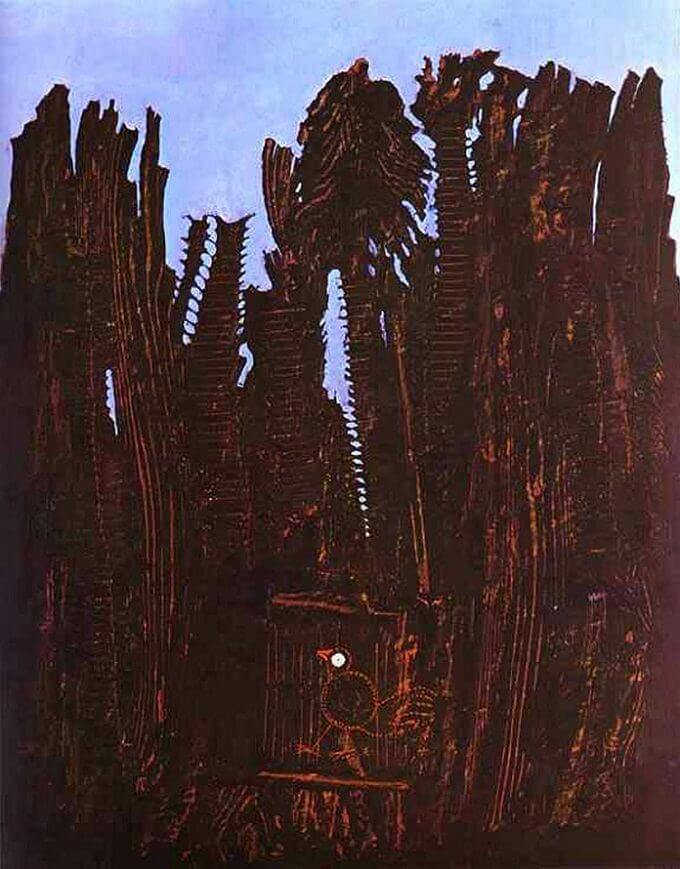
Max Ernst created Forest and Dove in 1927. It depicts a nocturnal scene of a forest of bizarre, abstract trees. In the thick of the forest is a childlike depiction of a dove.
Both the forest and dove themes have appeared several times in Ernst's works. Max Ernst was haunted from childhood by a feeling of enchantment and terror induced by the all-enveloping atmosphere of the forest near which he was born.
This painting has a heavily textured and three-dimensional appearance. This is owed to a technique called grattage. Grattage was invented by Ernst and the Spanish surrealist Joan Miro. This technique involves scraping the paint across the canvas so that the paint takes on the imprints of objects placed beneath the canvas.
Following his discovery of the technique of Grattage in 1925 he made many paintings in which he explored these hallucinations. Some of the pictures in this series include the rising or setting sun; this is one of a number in which the only sign of life is a solitary bird.
Even though not considered as a Symbolism artists such as Gustav Klimt, Egon Schiele, Max Ernst uses a lot of symbols in his paintings. It has been established that Ernst used birds as symbols to represent himself. This artwork is likely echoing the artist's feelings at a time which he spent probing his subconscious. Inside that subconscious, what he found was a sense of entrapment and primordial fear - both echoed in this painting.

